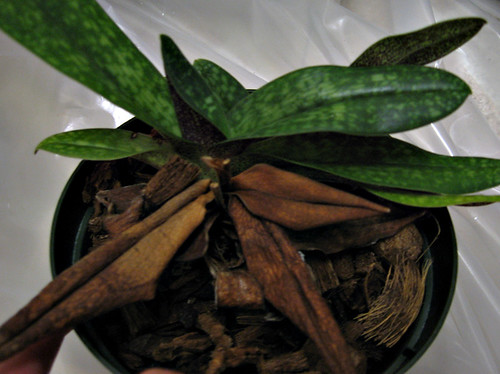M
MoreWater
Guest
I’m still pretty new to paphs, and looking at the various seedlings I started with a couple of years ago, some are definitely shrinking and others are – to my surprise – actually growing. I’m trying to get a better handle on these things (again), and the mix of stuff I have is making it difficult to wrap my head around..... Some help would be appreciated.
Today, I stared at the trays of paphs and phals on my kitchen floor and noticed the following:
Growing
woluwense (niveum x roth)
harold koopowitz (malipoense x roth)
ken ichi takaya (supardii x philip)
Shrinking
deception II (niveum x delenatii)
wossner kolarmi (kolopakingii x armeniacum)
deperle (delenatii x primulinum)
Is it possible to draw conclusions from this basic observation? I've been treating them all the same.
Deperle and deception II are literally fewer fans than when I got them, although the live ones look fairly decent....
Maybe there is a characteristic of roths that make them easier for me? (the two niveum crosses are doing very differently)
The most common complaints I get from the plants here are (1) too hot and (2) too dry, so those would be the first considerations.
I've also got a bunch of other seedlings, and John got me into complex paph thingies recently so I'm now staring at those and wondering how they will do.......
Today, I stared at the trays of paphs and phals on my kitchen floor and noticed the following:
Growing
woluwense (niveum x roth)
harold koopowitz (malipoense x roth)
ken ichi takaya (supardii x philip)
Shrinking
deception II (niveum x delenatii)
wossner kolarmi (kolopakingii x armeniacum)
deperle (delenatii x primulinum)
Is it possible to draw conclusions from this basic observation? I've been treating them all the same.
Deperle and deception II are literally fewer fans than when I got them, although the live ones look fairly decent....
Maybe there is a characteristic of roths that make them easier for me? (the two niveum crosses are doing very differently)
The most common complaints I get from the plants here are (1) too hot and (2) too dry, so those would be the first considerations.
I've also got a bunch of other seedlings, and John got me into complex paph thingies recently so I'm now staring at those and wondering how they will do.......




